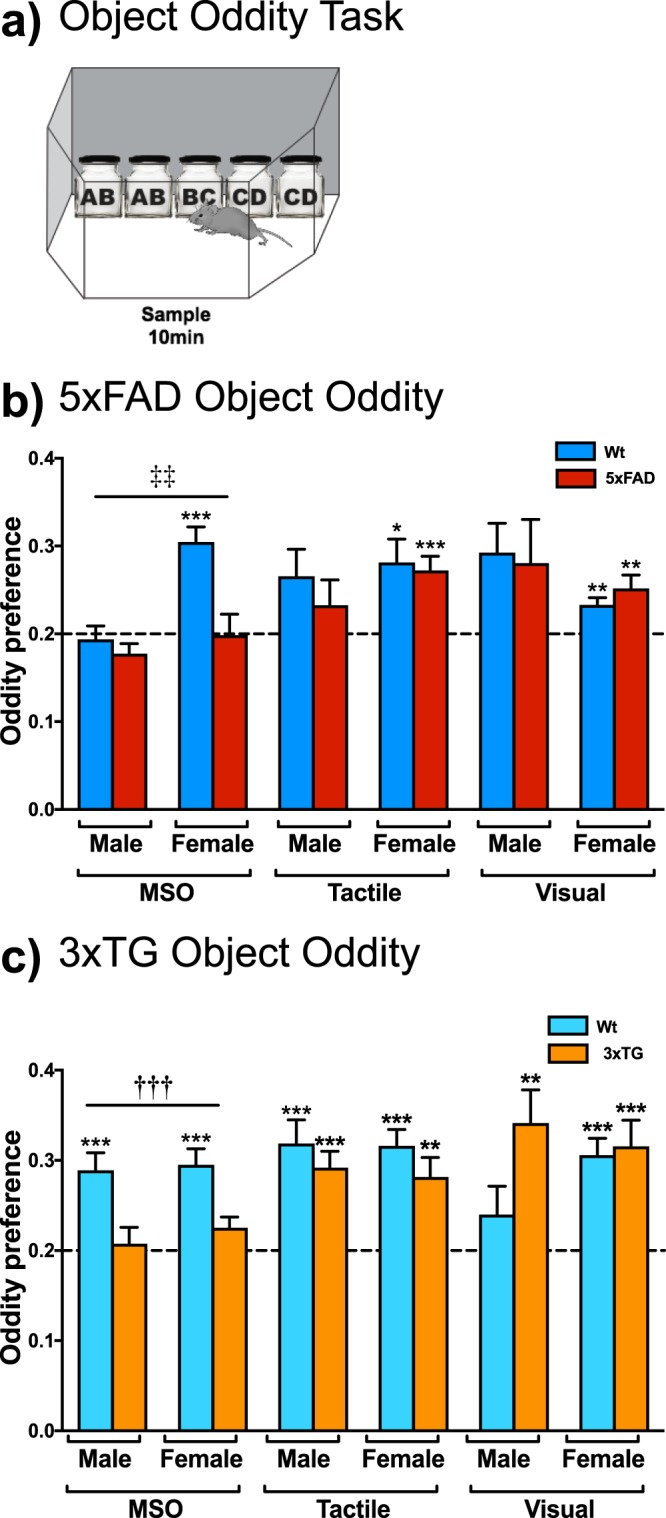Figure 2.

5xFAD and 3xTG mice have impairments in multisensory object oddity. (a) Schematic of multisensory and unimodal object oddity tasks. Wt and 5xFAD male mice had irregular performance on multisensory and unimodal tactile and visual object oddity. (b) 5xFAD female mice had a deficit in multisensory but not unimodal tactile or visual oddity (Wt male n = 10, Wt female n = 10, 5xFAD male n = 12, 5xFAD female n = 11; a significant main effect of task (F2,78 = 3.740, p = 0.035) and a task x sex interaction (F2,78 = 4.302, p = 0.022) were observed). (c) 3xTG mice had deficits in multisensory but not unimodal tactile or visual object oddity (Wt male n = 13, Wt female n = 15, 3xTG male n = 14, 3xTG female n = 14; a significant main effect of task (F2,104 = 4.795, p = 0.010) and task x genotype interaction (F1,104 = 6.967, p = 0.001) were found). Data are mean oddity preference ± SEM. *p < 0.05, **p < 0.01, ***p < 0.001 indicates significant one-sample t-tests, suggesting intact perception (two-tailed). †††p < 0.001 Indicates a significant difference between Wt and 3xTG mice (independent samples t-test, two-tailed, Bonferroni correction). ‡‡p < 0.01 Indicates a significant difference between males and females (independent samples t-test, two-tailed, Bonferroni correction).
